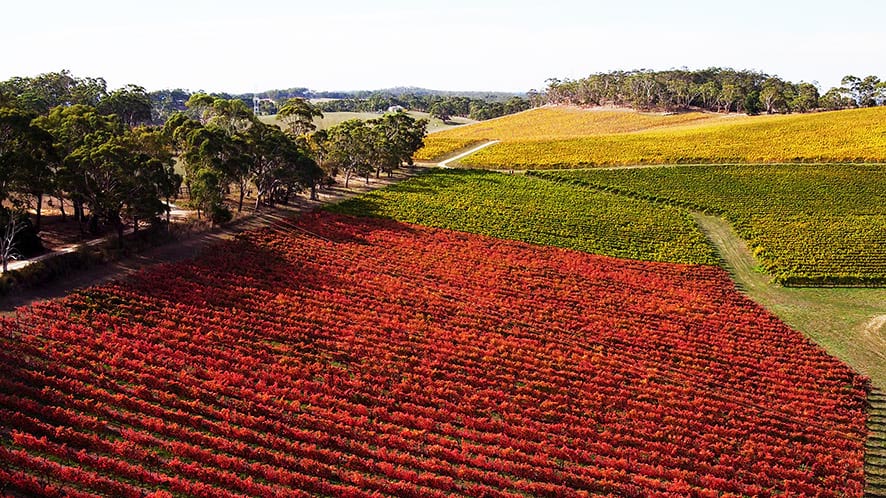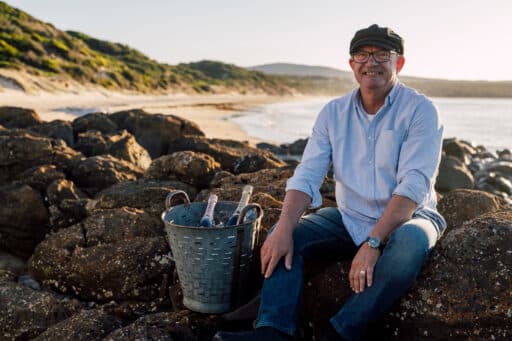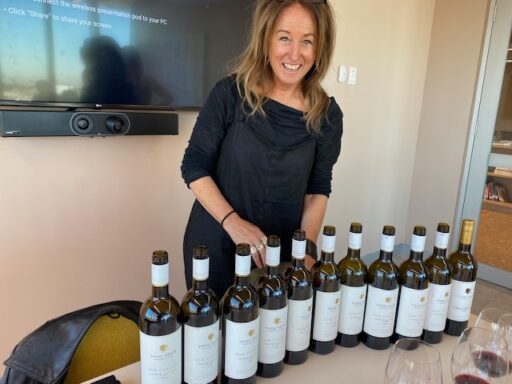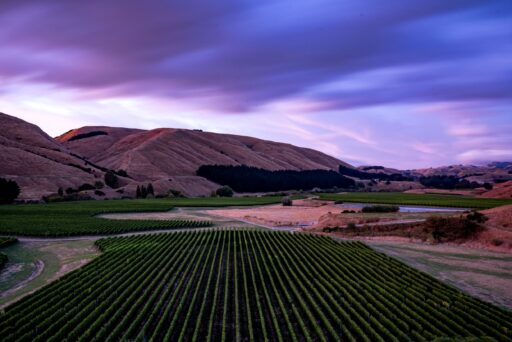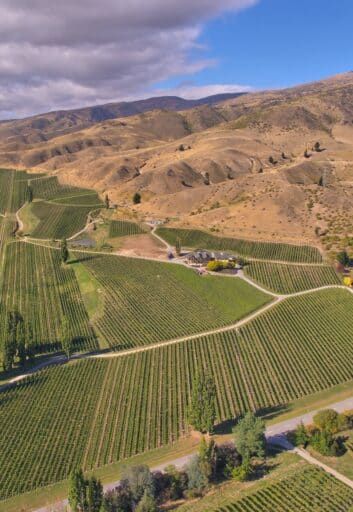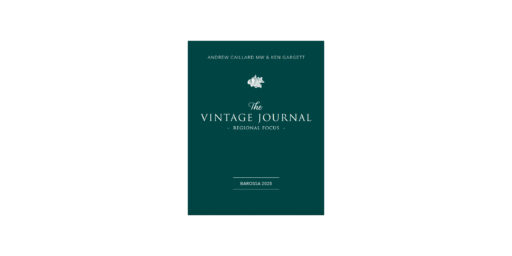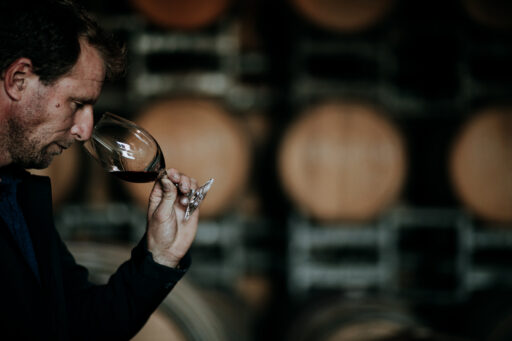Just when we’ve got our heads around the idea of single vineyards – even single blocks within those vineyards – as the be-all and end-all of how a wine reveals its true identity.
Just when many regions have done their soil mapping and sub-district definitions to showcase the differences in the ways certain varieties smell and taste because of what lies beneath.
Just when. When many a winemaker across the country releases half a dozen, maybe eight, nine, sometimes ten distinct iterations of the same variety from a range of sites across one region. Just because of the revelation.
It’s then, perhaps, that the message hits home. That wine can be so much more than just a tasty little social lubricant. That it can reflect unbridled creativity, curiosity, diversity, artistry, you name it, in the quest for a deeper expression.
Deeper and deeper, the winemakers go. In search of such individuality. To discover what can be the most unique. The most singular. The essence.
If you go this far, even further, you will find yourself in what sounds like very complex territory. The world of clones. Grape varietal clones – not science fiction clones.
It’s a place where you’ll find pinot noir and chardonnay winemakers, of Burgundy originally, and now spread far and wide with reportedly a thousand or so different clones just of those two varieties, developed over years of natural and human selection.
It’s a place where you’ll find the vine improvement experts and agri-scientists cultivating better versions of key grape varieties to make better wines and also to cope with matters of disease, and yield and environmental issues such as climate change.
And it’s also a place where you’ll find the viticulture and winemaking teams at Sidewood Estate in the Adelaide Hills, nurturing six variations on the pinot noir theme and 12 versions when it comes to shiraz.
Vineyard manager Mark Vella and winemaker Darryl Caitlin took the first leaps into such complexities with chardonnay clonal selections, which convinced owner-vignerons Owen and Cassandra Inglis of the worth of then going the extra distance with their red varieties. After extensive research into the pinot clones already growing in the Hills, they looked further afield at the success stories out of New Zealand and Tasmania as well, of course, France; at the yields, the growth patterns, the environmental fits with Sidewood’s major vineyard at Mappinga Road, Oakbank, the matching of other individual clones and soil profiles on the property, and, obviously, the vinous characters that result.
Many of the new clones they chose had flavour profiles that were quite different to those already growing in the Hills, Mark recalls “We thought if we had more choices, we could work up single vineyard/single clone wines and also use them to all go into a more complex estate blend”. This is where the notion of a single vineyard wine becomes profoundly detailed. All six pinot clones in the Sidewood inventory grow on one 400m-500m northwest facing slope in Oakbank. Just one slope, though the soils change from high to low point, with different amounts of quartz and shale and limestone over loams and clays, and varying moisture retention and nutrient supplies all affecting the vigour and crop levels and importantly the flavours, textures, acidity and fruit profiles of each clone growing in its best place upon that one enlightened hill.
Each is picked separately according to seasonal impacts, and all the parcels are kept separate with 20 to 30 resulting ferments, some clones split even further into varying amounts of whole bunch and destemming treatments. Certain clones, Darryl Caitlin says, suit specific amounts, and even that changes vintage to vintage. The ultimate aim, he says, is to make the very best single clone wines across the whole of that hill.
“They are our starting point,” Darryl says. “We begin at the top echelon wines we make each year, and define the most singularly characterful of those individual pinot clones.
They are very small volumes, so the rest of all those parcels are then directed into the annual estate blend, which brings amazing quality and a wide range of clonal characters to that wine.”
Once that blend is created, if Darryl reckons there is something missing, something even like a one or two percent whole bunch character for instance, he’ll raid the single clonal selections to make sure the final estate wine is the best of everything they have during that vintage. While the single clone wines – the 777, Abel and Oberlin iterations – are the champions of the pinot program, the estate blend is the best combination of all the greater elements from each of the contributors.
The shiraz collection works a little differently, though with similar attention to detail from vineyards to winery. From three estate owned vineyards across the Hills, including a “hero block” at Ironstone Road, Echunga, 12 clones come into the winery as Darryl and his team begin to create their pinnacle Mappinga Shiraz. In the process they look at each variation to decide which of them are worthy of single shiraz clone releases – currently only two have earned that honour, Savii19, which makes up the Ironstone Barrels The Tyre Fitter Syrah, and PT15, which makes up the Ironstone Barrels The Old China Hand Syrah.
With much of the fruit graded at the elite Mappinga Shiraz level, once the small-volume, high-end wines are decided, the rest is worked into the Sidewood Estate Shiraz, bringing an extraordinary depth and complexity to a wine in the mid-$20 range.
“Not only are we safeguarding our harvest with a diversity of clones growing in a range of conditions and climates in different seasons, we also are receiving their full salad bowl of characters,” Darryl notes. “In some years, certain clones will produce amazing spice, others will be more about pepper, some will be blue fruits, some darker fruits, with different tannin profiles and structures. It’s all about having as many options as possible to work with. It’s the diversity that is so appealing.”
While he acknowledges that the sites each of the pinot and shiraz variations hail from, and of course the viticultural focus directed to every vine, are clearly critical, the artistic expression he can bring via clonal differences is where the next level of Sidewood winemaking begins. “Everyone talks about site, everyone talks about winemaking, but no one talks about these glaringly obvious, artistic differences,” Darryl says. “It’s the same site essentially – the vines are literally just metres apart from each other – and yet the differences couldn’t be more expressed. These vines and wines all have different characters, and then each vintage it changes again. The nuances are incredible.”
It’s like looking at a family, he says. It’s like saying three brothers are all the same, but they’re not, they all have different characters. “It’s so basic, but then, it’s so complex as well.”
Sidewood Estate Pinot Noir 2019
Adelaide Hills 12.5%
$32 94 points
A multi-clonal blend with MV6 as its backbone, then layering in of 777, Abel and Oberlin clones from the home vineyard in Oakbank. Approximately 20% whole bunch on average across about 12-16 parcels. This is a fully fragrant, pretty pinot with its crimson blackcurrant florals and crushed red berries spectrum of aromatics – and they can keep you enthralled if you don’t control yourself. Flavour wise this morphs towards a more black cherry fruit feel with bright acidity and a delicate sourness that weaves into a light tannin grip in the palate. Lifted, energetic and a terrific food wine.

Sidewood Estate Signature ‘777’ Pinot Noir 2019
Adelaide Hills 13.5%
$40 95 points
One of three finite-resource, single-clone pinots from the same hillside in Oakbank, this begins with an engaging aromatic that recognises with respect its 30% whole bunch treatment, the clonal elements here offering a fine, minerally, dusty earthiness and delicate leafiness as you first sip, spice complexities appearing within a more restrained fruit layering of black cherry. A good liveliness in the palate, restrained acidity and delicious balance.

Sidewood Estate Signature “Abel” Pinot Noir 2019
Adelaide Hills 12.5%
$40 96 points
This clone can be the most vintage sensitive of all the pinot variations in this Oakbank Mappinga Vineyard, according to its coaches, viti-manager Mark Vella and winemaker Darryl Caitlin. Bright, brick red in the glass, it is a little coy to the nose, though really enticing, asking you to delve a bit longer into its depths. When you sip there is a fine grain tannin that feels like a soft carpet on the tongue, though once you’re settled, its fruit-driven acidity pushes through the mouth as part of a gentle wave of lovely, subtle, sophisticated pinot. As alluring as pinot can be.

Sidewood Estate Signature ‘Oberlin’ Pinot Noir 2019
Adelaide Hills 13.5%
$40 97 points
This clone is the one winemaker Darryl Caitlin reckons you can push the boundaries with, and one that responds well to whole bunch. So, here you go: 100% whole bunch and wild ferment. In the glass it shows charming crimson to purple colour, then aromatically it first feels a little shy, a subtle cherry like sense. But taste this devil and it has real power in the palate, great depth, resounding bass notes and dark cherry beats. It’s quite a ride: so subtle to begin yet amazing staying power, and after an hour or so open to the world it comes fully to life with delightful cherry/raspberry flavours. Fabulous wine.

Sidewood Estate Shiraz 2019
Adelaide Hills 14%
$26 95 points
Release Date: 2021
Multiple vineyards – well, the three across the estate from Echunga, to Mappinga and the Nairne winery block – so plenty of choice during harvest from 12 clonal variations. This just sings from the whole Adelaide Hills shiraz songbook: an attractive dark berry and herb garden leaf in the aromas, followed by bright and dynamic fruit with a delicate gastronomic amaro bitters edge. Classy. Fine tannins, juicy to chewy in the mouth, and so full of life-affirming expression. Living, breathing shiraz and very more-ish

Sidewood Estate Signature ‘Tyre Fitter’ Syrah 2018
Adelaide Hills 14.5%
$50 96 points
A single vineyard, single clone release from what the Sidewood crew call their “hero vineyard” of shiraz at Ironstone Rd, Echunga. The clone is Savii19, and its main expression is focused intently on textural feels. It’s tighter than the estate, more restrained in its aromas and more initially about a sense of gravels, minerals and finely crushed rocks. A sense of place, if you will. But wait and through the floor come bursts of fruit – deliciously ripe, sweet plums, fleshy, lively over the top of its earthy foundations. This is not a one-trick shiraz by any means – lots of interest that has you going back to the glass time and time again.

Sidewood Estate Signature ‘China Hand’ Syrah 2019
Adelaide Hills 14.5%
$50 95 points
Release Date: 2021
One of two single Echunga vineyard siblings, this single clone variation being PT15, and the expression couldn’t be more different to the other, the ‘Tyre Fitter’ from clone Savii19. How so? Imagine the most surprising dark and intense aromatics: part sarsaparilla, part dark-roasted beetroot. Extraordinary characters when it comes to Adelaide Hills shiraz. It’s dense and concentrated, with dark chocolate and prune flavours and textures – part grainy, part sticky – distinctive and pronounced, yet even through all this there is fresh acidity and lively dark fruit. The evidence of this clone in this wine is demonstrative, and arguably overrides its regionality.

Sidewood Estate Mappinga Shiraz 2018
Adelaide Hills 14.5%
$60 96 points
A barrel selection of the best of the season across all three Sidewood Estate vineyard parcels and their 12 clones. Partial whole bunch across the total, but more whole berry ferment employing the concepts of carbonic maceration, before spending 18 months in French barrels, 35% new – which stay cleverly in the shadows. Putting all of that together, this first succeeds in its fine lines and balance across the weave of flavour and structure, then there’s an underlying concentration of dark fruits and black berries with their bright acidities intact, fine, chewy lip-smacking tannins assisting, and rich spice seasoning – enticing white pepper especially – all combining for a major Hills shiraz experience.

This 100% independent content was published with support from the winery.


